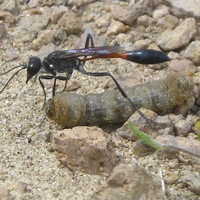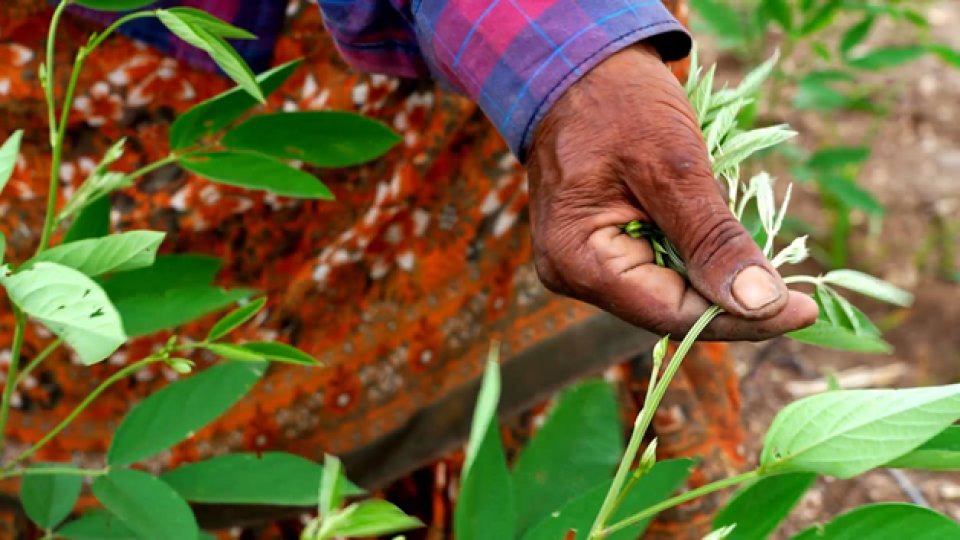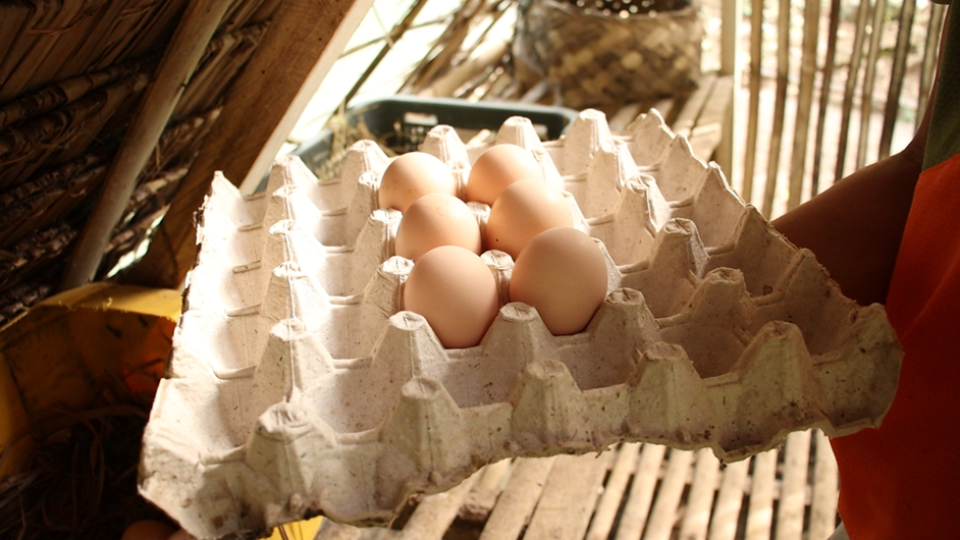
Gooseberries were my grandmother’s favourite.
All different varieties - with fruits of varying colour, shape and crispiness – lined the pathways of her tiny backyard garden in western Flanders. Over the span of her life, she had steadily collected them by exchanging cuttings with friends, neighbours and other amateur horticulturists. Having nursed them into full-grown bushes, she annually gathered buckets-full of succulent berries from them – to be turned into the most appetizing jams, sweets or savoury spirits.
From early spring till autumn, grandmother meticulously screened each of those for aphids, sawfly larvae and all kind of other obscure creatures. Aphid colonies tended to be few but did cause rather conspicuous leaf curling – while each colony was invariably accompanied by a “standing army” of parasitic wasps, predatory bugs and brightly coloured ladybugs which kept aphid numbers in check.
Yet, all these diminutive six-legged creatures – pests and beneficial insects alike – were grandmother’s sworn enemies. True “vermin” that had to be dealt with properly! It even deserved a yearly border crossing into Holland, where a highly toxic organophosphate insecticide that was synthesized by Germany’s IG Farben during the 1940s could still be purchased. Thus, stocked up on toxins, grandmother was all set to wage war against the six-footers!
Farmers’ little helpers
This over-reliance upon chemical pesticides isn’t just characteristic of Flanders’ elderly amateur horticulturalists. In fact, it typifies pest management decision-making of many homeowners and farmers across the globe and is directly tied to their deficient ecological literacy. While farmers and food producers often give distinct names to diurnal, large-bodied or culturally important organisms (e.g., crop pests, honeybees, social wasps or butterflies), most other farm-inhabiting creatures are utterly unknown.
Ladybugs might very well have been grandmother’s lucky charms – yet that didn’t apply when they alighted on the gooseberries, nor did she know they would munch away on those dreaded aphids! Instead, being oblivious of biological control, she had unswerving faith in a regular dusting with organophosphates.
These same patterns can be observed across the globe – from industrialized wheat farming in Russia’s Volga region, to the US Palouse barley fields to smallholder-managed paddy rice in Thailand. Some of our recent work reveals how farmers in those settings on average enumerate less than one (1!) ‘good’ pest-killing organism in their respective crops or farming systems.
Moreover, nearly 70% of the world’s farmers are entirely unaware of the existence of biological control, i.e., the ecosystem service provided by invertebrate predators, hymenopteran parasitoids and a whole suite of micro-organisms. This is most surprising, as biological control services are regularly worth hundreds of dollars per hectare and help farmers cope with biotic shocks and agroecological upheavals. Ladybugs and countless other invertebrates are indeed farmers’ most loyal allies, working 24/7 to safeguard crop harvests, yet their services largely go unnoticed and unappreciated!
The power of observation
Certain farmers however do take notice.; Increased grower awareness and a more careful observation of field-level ecological processes can make a huge difference. In traditional farming systems, such as Central America’s milpas, maize growers have come to recognize the action of several (large-bodied) beneficial insects such as social wasps, ants and earwigs – with the latter often seen as ‘guardianes’ or ‘guardian angels’ of their crop. Many of them don’t even perceive herbivores as economically-limiting pests and, as a result, actively refrain from pesticide use.
Observation-based learning can also trigger farmer experimentation, as evidenced by Honduran campesinos’ use of sugar-water sprays to attract ants and thereby bolster biological control. Down south, in Bolivia’s Altiplano, small-scale quinoa producers eagerly describe how different species of burrowing wasps (Sphecidae) hunt caterpillars and sustain their in-field populations by consuming nectar from (native) flowering plants, as can be seen in the delightful video ‘The wasp that protects our crops’.
Not only are such first-hand observations key to retain the agroecological balance of smallholder farms, they can equally guide the redesign and remediation of conventional input-intensive monocultures. Indeed, large-scale quinoa monocrops are plagued by pest outbreaks, erosion and dwindling crop yields. The establishment of live barriers with native plants on such farms provides sphecid wasps with sufficient quantities of energy-rich nectar, restores overall ecosystem resilience and ultimately contributes to ‘ecological intensification’. How farmers manage such live barriers can be seen in ‘Living windbreaks to protect the soil’.
Innovations of global relevance
Most farmers are tireless experimenters; continuously tweaking different aspects of their respective crop/farm management in order to enhance resource-use efficiencies, lift yields and raise revenue. When equipped with the necessary (ecological) insights, they often come up with the most ingenious solutions to crop pest problems – even when these threats suddenly appear. While the validity of innovations such as Honduran sugar sprays or Bolivia’s live barriers around quinoa fields might be limited by crop type or agroclimatic particularities, the underlying principles hold true across systems and geographies.
When facing the invasive fall armyworm Spodoptera frugiperda, certain Kenyan farmers not only keenly observed the pest control action of ants or rove beetles, but also rapidly devised ways to offer them (alternative, non-prey) food sources and attractants (see: Killing fall armyworms naturally).
Conversely, Ghanaian mango growers who are tackling the invasive fruit fly Bactrocera invadens have quickly come to recognize the importance of weaver ants Oecophylla spp., as can be seen in the fascinating video ‘Weaver ants against fruit flies’. These ants have been tended for millennia by fruit producers in Vietnam, Myanmar and China – with local farmers feeding resident populations with chicken innards, sheltering them from pesticide sprays and using bamboo bridges to maximize their foraging range.
A South-South transfer of some of those farmer innovations across crops, countries and continents carries unprecedented opportunities to build ecological literacy and advance biological control. And this is exactly what the Access Agriculture video platform envisions.
A true win for farmers, biodiversity and human health
I fondly remember savouring the delicate sweetness of grandmother’s gooseberries, while seated on her old divan. Now, 30-40 years later, I have also come to realize how important those beneficial insects are in providing (cost-free) pest control. If only grandmother had known what those tiny ladybugs and rove beetles were up to, her garden path could have been a true haven for plant and animal biodiversity. And... the yellowish speckles on her gooseberries might very well have been vanilla sugar instead of methyl parathion!
Note: The United Nations has declared 2020 as the International Year of Plant Health (IYPH). One of its objectives is to emphasize an ecosystem approach, which combines different management strategies and practices to grow healthy crops while minimizing the use of pesticides. Avoiding poisonous substances when dealing with pests not only protects the environment, it also protects pollinators, natural pest enemies, beneficial organisms and the people and animals who depend on plants.
Further reading
Wyckhuys, K.A.G., Heong, K.L., Sanchez-Bayo, F., Bianchi, F.J.J.A., Lundgren, J.G. and Bentley, J.W. (2019) Ecological illiteracy can deepen farmers’ pesticide dependency. Environmental Research Letters 14(9), 093004. https://iopscience.iop.org/article/10.1088/1748-9326/ab34c9/meta
Wyckhuys, K.A.G., Aebi, A., Bijleveld van Lexmond, M.F.I.J., Bojaca, C.R., Bonmatin, J.M., Furlan, L., Guerrero, J.A., Mai, T.V., Pham, H.V., Sanchez-Bayo, F. and Ikenaka, Y. (2020) Resolving the twin human and environmental health hazards of a plant-based diet. Environment International 144:106081. https://doi.org/10.1016/j.envint.2020.106081
Wyckhuys, K.A.G., Sasiprapa, W., Taekul, C. and Kon, T. (2020) Unsung heroes: fixing multifaceted sustainability challenges through insect biological control. Current Opinion in Insect Science 40:77–84. https://doi.org/10.1016/j.cois.2020.05.012
Wyckhuys, K.A.G. and Zhou, W. (2020, September 1) Greener Revolution. https://natureecoevocommunity.nature.com/posts/invertebrate-catalysts-of-a-greener-revolution


